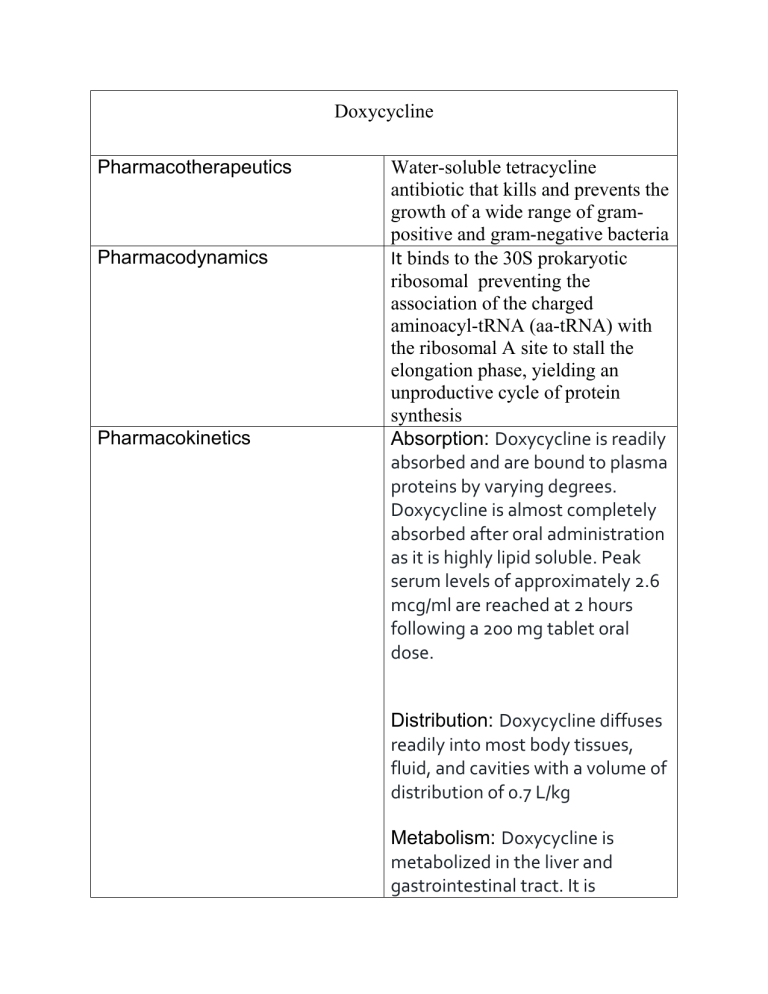

Keep well hydrated with fluids to avoid the development of crystals in the urine or kidney stones.Contact your doctor if diarrhea develops either during treatment or within a couple of months of ending treatment. Like other antibiotics, sulfamethoxazole/trimethoprim can change the natural balance of bacteria present in your gut and may cause severe and persistent diarrhea, associated with a bacteria called Clostridium difficile.Seek urgent medical advice if an unexplained cough, shortness of breath, sore throat, fever, muscle or joint pain, paleness or yellowing of the skin, or diarrhea develops.Should not be used in pregnant or lactating women or babies less than two months old.
Shelf life of doxycycline full#
Complete the full course as prescribed (unless instructed not to do so by your doctor) to reduce the risk of resistant bacteria developing.
Shelf life of doxycycline skin#
Discontinue and seek urgent medical advice if a skin rash develops.Sulfamethoxazole/trimethoprim will not treat viral infections, such as a cold or the flu. Take only as directed by your doctor and do not share with anyone else as misuse can encourage the development of drug-resistant bacteria and reduce the effectiveness of sulfamethoxazole/trimethoprim.Swallow tablets with a big glass of water. The risk of side effects may be higher in the elderly. Sulfamethoxazole/trimethoprim is an effective combination antibiotic however, it may not be suitable for those with kidney or liver disease or folate deficiency. Note: In general, seniors or children, people with certain medical conditions (such as liver or kidney problems, heart disease, diabetes, seizures) or people who take other medications are more at risk of developing a wider range of side effects. May interact with several other drugs including thiazides, warfarin, phenytoin, methotrexate, digoxin, and medications for diabetes.May lower blood sugar levels in people without diabetes.Sulfamethoxazole/trimethoprim should be discontinued at the first sign of a skin rash or any other worrying side effect. Reactions have included Stevens-Johnson syndrome (a disorder involving the skin and mucous membranes), liver disease, and blood disorders such as thrombocytopenia (low platelets). Rarely, severe, sometimes fatal reactions have been reported with the administration of sulfonamide-containing medicines such as sulfamethoxazole/trimethoprim.Elderly people may be more susceptible to the side effects of sulfamethoxazole/trimethoprim.Not suitable for pregnant or breastfeeding women or infants less than two months of age. May not be suitable for some people including those with kidney or liver disease, folate deficiency (the elderly, chronic alcoholics, and people taking anticonvulsants are at risk of folate deficiency), glucose-6-phosphate deficiency, porphyria, severe allergies, thyroid dysfunction, or bronchial asthma.Nausea, vomiting, abdominal pain, diarrhea, mouth or tongue inflammation, weight loss, flatulence, rash, and itchy skin.If you are between the ages of 18 and 60, take no other medication or have no other medical conditions, side effects you are more likely to experience include: Generic sulfamethoxazole/trimethoprim is available.Bacterial resistance is less likely to develop with the combination of sulfamethoxazole and trimethoprim than if either ingredient (sulfamethoxazole or trimethoprim) is taken alone.Both antibiotics also cross the placenta and are excreted in human milk. Effective concentrations of both sulfamethoxazole and trimethoprim are reached in the gastrointestinal tract, urinary tract, lungs, mouth, middle ear, and vagina.


The sulfamethoxazole component belongs to the class of medicines known as sulfonamides, and the trimethoprim component belongs to the class of medicines known as folic acid inhibitors.

Sulfamethoxazole/trimethoprim: 7 things you should know


 0 kommentar(er)
0 kommentar(er)
